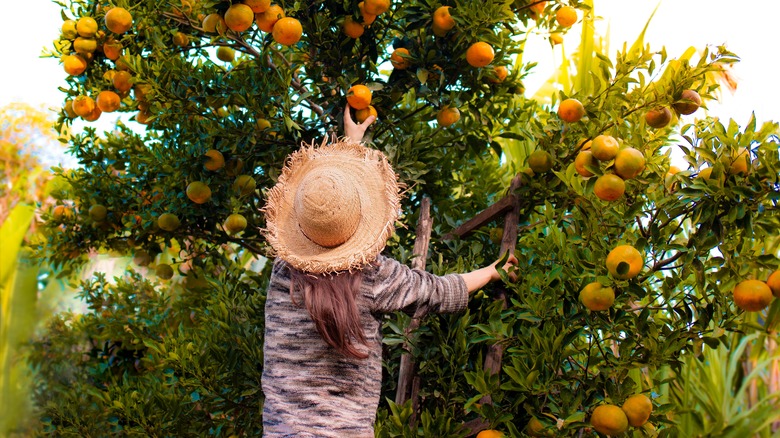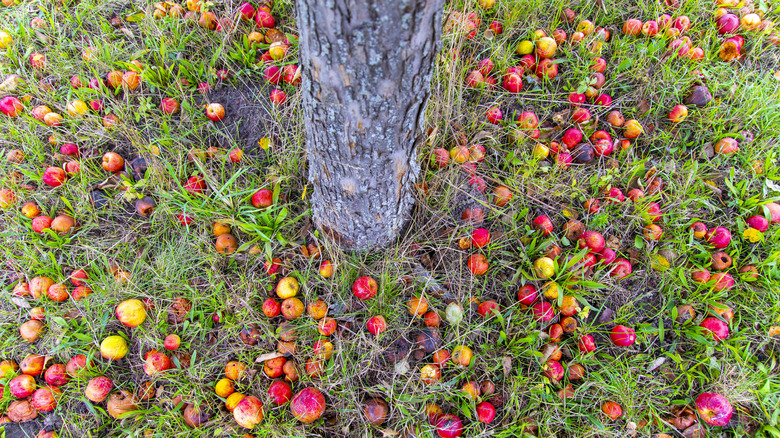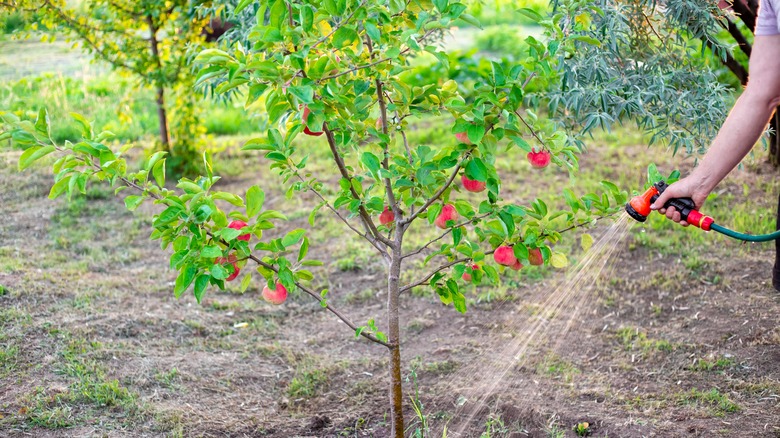One Clear Sign That Your Fruit Tree Is In Heat Stress (& What To Do About It)
Fruit trees don't just provide you with shade and beauty; they also give you plenty of edible bounty if all goes well. Unfortunately, trees that are suffering from heat stress often struggle with this. One of the surest signs your fruit trees can't stand the heat is if it is causing them to drop immature fruits or flowers.
To be clear, not all fruit drop is caused by heat stress. It's common for fruit trees to drop small fruits or spent flowers early in the season because they were never pollinated. This frees up the tree's energy to focus on the fruits that were pollinated and are developing well. Fruit drop caused by lack of pollination is generally finished by mid-June, though. In some cases, diseases can also cause trees to drop immature fruit, but one of the most common causes of unexpected fruit drop is physiological stress, like what a tree experiences during a heat wave or drought. Fortunately, you can help protect your fruit tree from heat stress by keeping it cool and well-hydrated.
Signs your fruit trees are experiencing heat stress
In addition to dropping fertilized but immature fruits, trees that are struggling with heat stress often show signs of sunburn, either on their fruit or on the leaves. In severe cases branches may die back and some fruit trees, especially apples, may even show sunscald on their trunks. These injuries tend to be most severe on the south side of the tree, as that is where the sun is strongest. Young trees also tend to be the most vulnerable.
Heat stress can often, though not always, be accompanied by drought stress as well. Before assuming this is the case, be sure to check the soil around your tree and see if it is dry about 6 inches below the surface. It may be shocking to learn that at maturity, a fruit tree requires up to 50 gallons of water on a hot day — though thanks to their roots, they should be able to find water even if the soil surface is dry, as long as there is water several inches down.
Protecting your fruit trees from heat stress
Salvaging stressed trees in your yard doesn't have to be a difficult process, especially if you caught the problem early. The most important thing is to provide your tree with some sun protection. If you've opted to grow your trees in a container garden, this can be as simple as moving them to a more protected spot where they aren't in direct sunlight, though for trees growing in the ground, you may need to get a bit more creative. Consider setting up a shade cloth or umbrella to block some of the sun's rays. Special whitewashes can also be applied to help provide the tree with extra sun protection. Evaporative cooling, or spraying water onto the tree's leaves and fruits to help them cool, is also a popular strategy used in many orchards.
Don't forget about the essential role garden mulch can play in keeping plants cool as well. Not only does mulch limit water lost to evaporation, but it also helps protect tree roots and growing media from the sun's rays, providing plants with a more consistent temperature. While it may be tempting to immediately start removing sun and heat damaged branches, it's generally best to wait to do that, as those branches may still be helping to shade parts of the tree.


